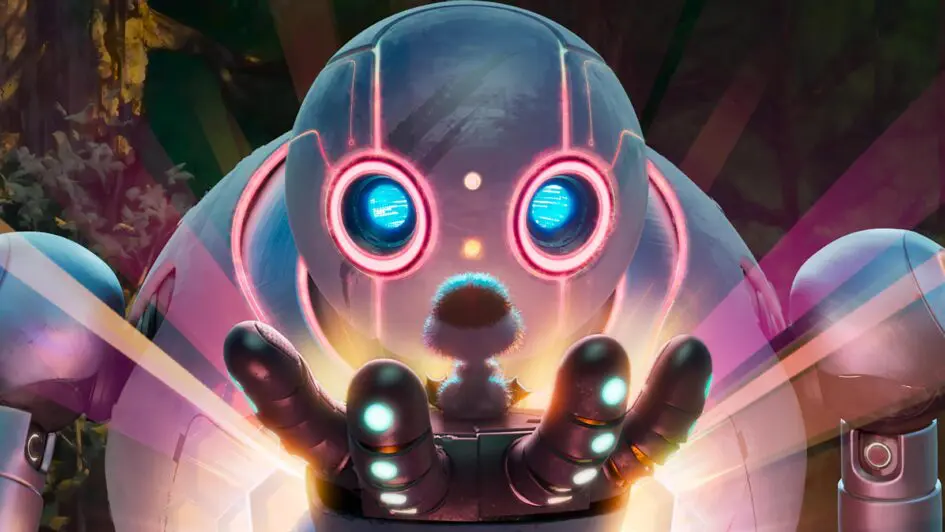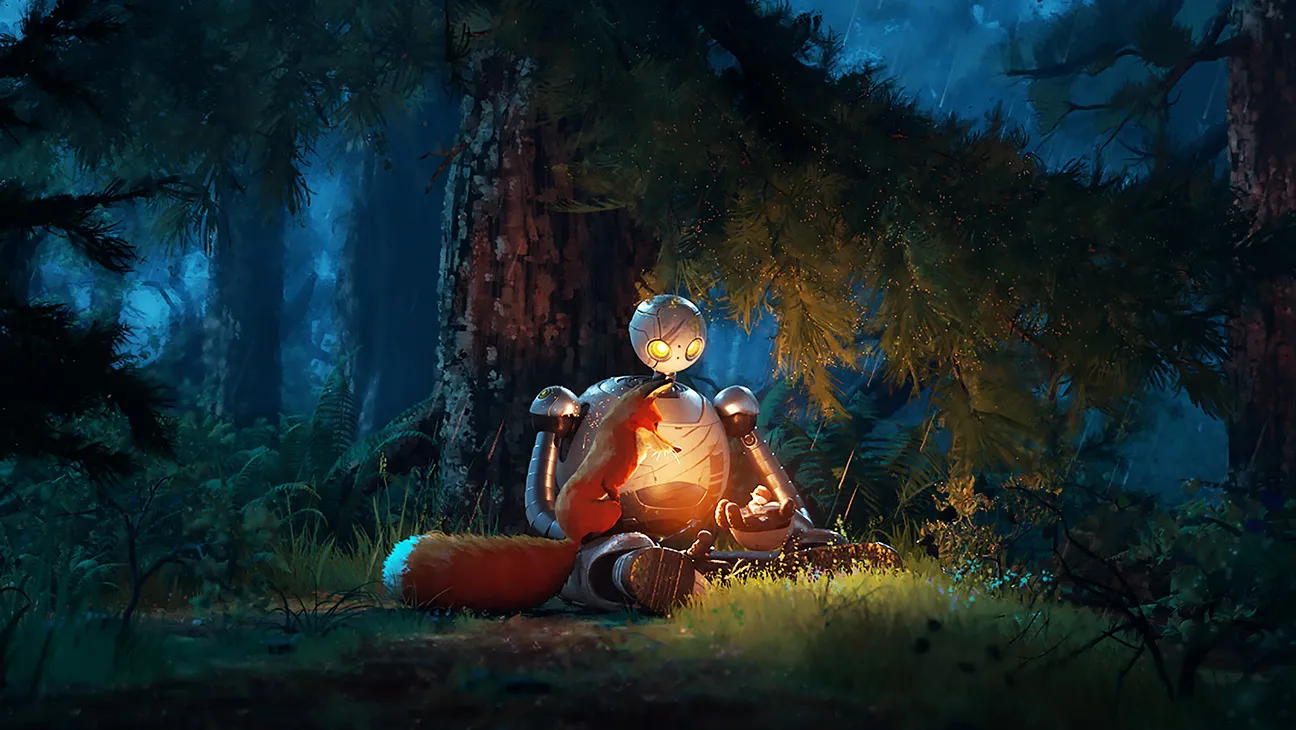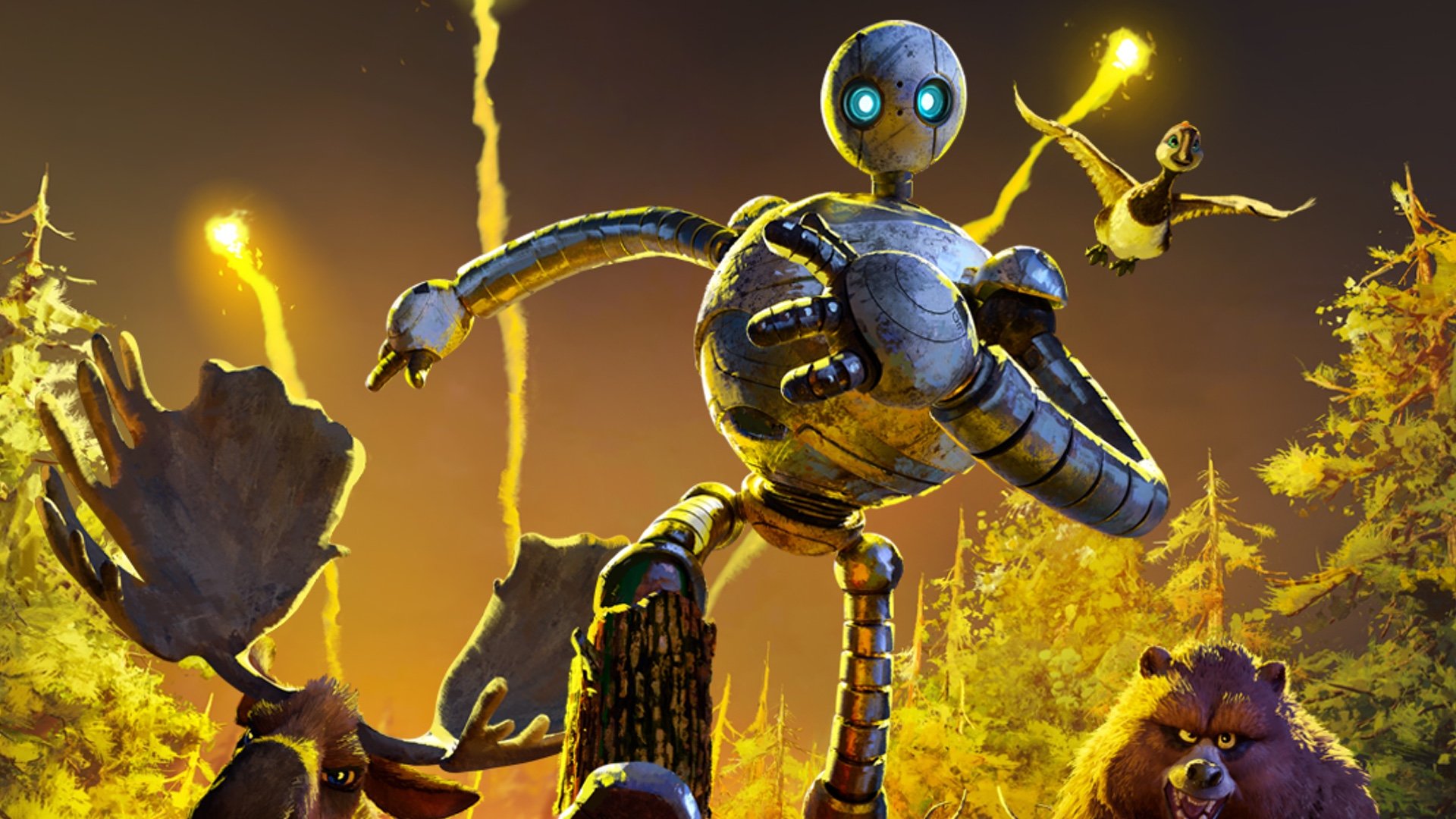There has been considerable Oscar buzz surrounding DreamWorks Animation’s The Wild Robot from critics who have previewed it in the film festival circuit. While I have not traditionally followed the nominees for a best-animated film, the extensive acclaim for this particular film has captured my attention. Whether due to my recent transition to motherhood or merely an evolution of my personal preferences, I promptly accepted the opportunity to screen this movie in advance.
Some may wonder if the movie lives up to the high praise, but for me, the real question was whether to wear mascara, because early reviews said there was no dry eye in the house following the movie.
In a futuristic setting, The Wild Robot follows the emotional journey of Roz, a robot from Universal Dynamics voiced by Lupita Nyong’o. Roz unexpectedly lands on an uninhabited island filled with native wildlife. As she attempts to adjust to her new surroundings, the local animals perceive her as a threat, despite her efforts to assist with any task she deems necessary for others.
A chance meeting leads her to become an adoptive parent to a gosling named Brightbill, voiced by Kit Connor. She also forms a bond with a fox named Fink, voiced by Pedro Pascal, which sets the stage for the story.
The cast doesn’t stop there: Catherine O’Hara voices an opossum; Mark Hamill voices a grizzly bear and Matt Berry voices a busy beaver. It’s difficult for me to choose one standout performance because they are all so wonderful, but I will give my award to Lupita as Roz. I’ve always enjoyed her performances, especially in A Quiet Place: Day One and Us. Her acting prowess is outstanding, and this movie is no different.
The film is an adaptation of Peter Brown’s book of the same name. Written and directed by Chris Sanders, who’s known for his work on Lilo & Stitch and How to Train Your Dragon, the filmmaker’s skillful interpretation of Brown’s original story is a masterclass on how to make an animated feature. Every component of the film is purposeful and executed with precision, from the cinematography and compelling characters to the visual artistry and musical score.
Sanders has expressed that he drew inspiration from the works of Hayao Miyazaki and characterized the computer-generated visual style of the film as “a Monet painting in a Miyazaki forest.” This description aptly captures the vivid and enchanting nature of the film’s colors, which imbue the screen with an intensely magical quality, creating a captivating journey through the island. Throughout the duration of the film, I found myself entranced.
The sheer beauty of the film evoked an emotional response, bringing tears to my eyes. Combined with the musical score, the overall experience has left a lasting impact that I am still processing. Kris Bowers’ composition of the score evokes profound emotional intensity, rendering it genuinely exquisite. I was surprised to see this was his first composition on an animated film.
The movie conveys various messages open to interpretation, reflecting its subjective nature. As a new mother, I strongly relate to the character Roz. The journey into motherhood cannot be explicitly taught but learned through experience, a process Roz embodies. This portrayal resonated with me as I reflected on my early days as a mother, navigating the uncertainties and challenges accompanying this role. The profound bond between Roz and Brightbill is lovely and sometimes challenging, and I feel a deep connection with it. Equally delightful laugh-out-loud scenes add a wonderful dimension to the overall experience to offset the emotional moments.
Another powerful theme the film conveys is the importance of not allowing differences to hinder one’s pursuit of personal aspirations. Upon her arrival, Roz was initially perceived as a “monster.” Brightbill strongly desires to fly and gain acceptance within his avian community. Fink, who is not well-liked by the animals on the island, yearns for affection and approval. You will have to watch the movie to see where all these things end up, but I appreciate its celebration and inclusion of individuals often considered or labeled “different.”
The movie is not only a cinematic masterpiece but also suitable for all age groups, with a PG rating. It contains some intense moments and mild violence toward the end, primarily involving robots using laser guns, which may be distressing for younger children. There is also some talk about death, but not in-depth. I would recommend checking online for any warnings to ensure you are aware of them, especially if you plan on taking young children.
The Wild Robot presents a compelling cinematic experience characterized by its profound emotional depth and themes of inclusivity. It will make you laugh out loud while tugging at your heartstrings. I genuinely believe it’s the best-animated film in the last few years and should be watched on the big screen. It demonstrates animation’s power and impact, and I look forward to what DreamWorks will construct next. I rate The Wild Robot five out of five stars.
Also, to address my initial question, if you wear mascara, make sure it’s waterproof.
Rate PG — 102 minutes


